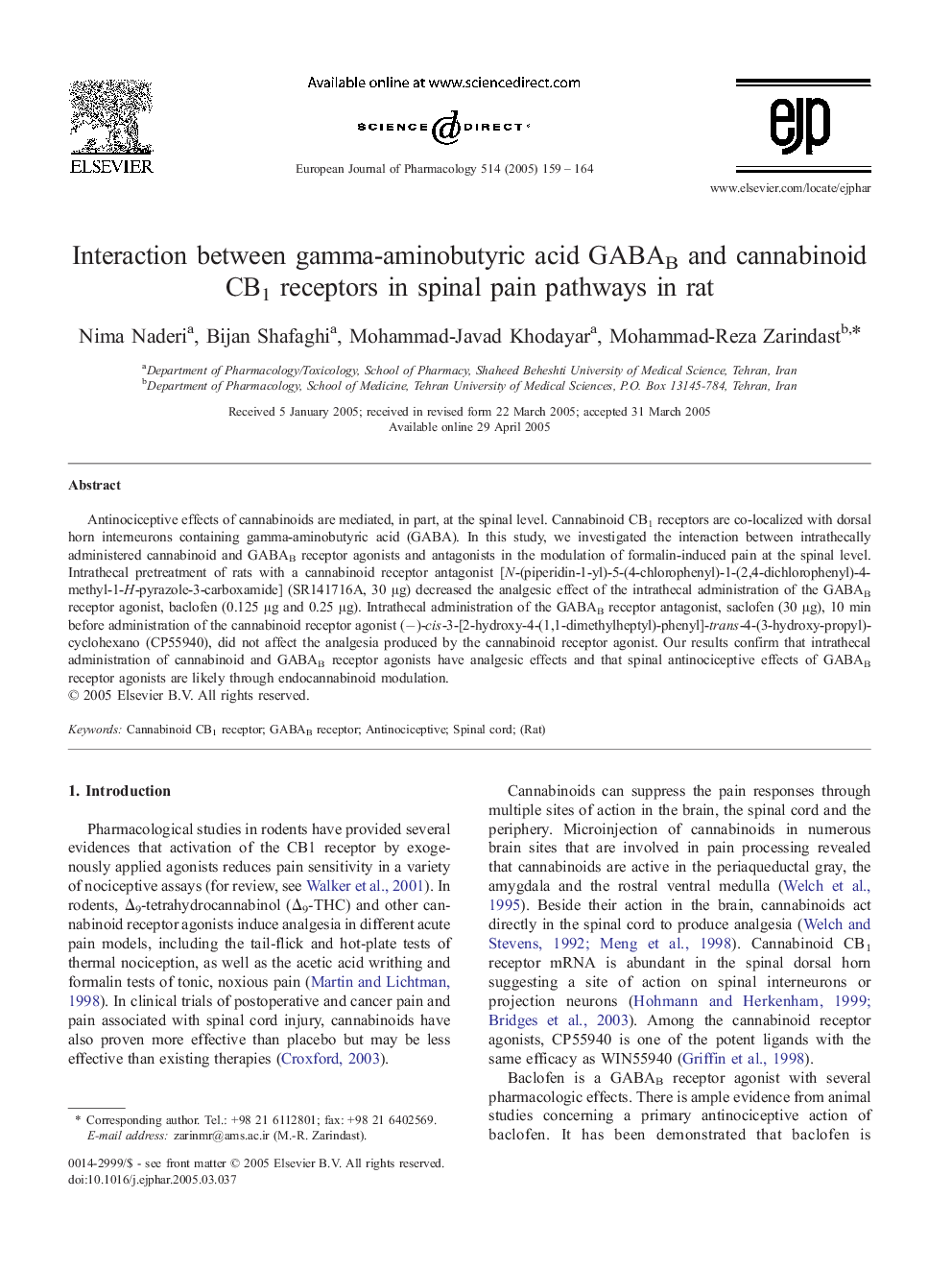| Article ID | Journal | Published Year | Pages | File Type |
|---|---|---|---|---|
| 9921331 | European Journal of Pharmacology | 2005 | 6 Pages |
Abstract
Antinociceptive effects of cannabinoids are mediated, in part, at the spinal level. Cannabinoid CB1 receptors are co-localized with dorsal horn interneurons containing gamma-aminobutyric acid (GABA). In this study, we investigated the interaction between intrathecally administered cannabinoid and GABAB receptor agonists and antagonists in the modulation of formalin-induced pain at the spinal level. Intrathecal pretreatment of rats with a cannabinoid receptor antagonist [N-(piperidin-1-yl)-5-(4-chlorophenyl)-1-(2,4-dichlorophenyl)-4-methyl-1-H-pyrazole-3-carboxamide] (SR141716A, 30 μg) decreased the analgesic effect of the intrathecal administration of the GABAB receptor agonist, baclofen (0.125 μg and 0.25 μg). Intrathecal administration of the GABAB receptor antagonist, saclofen (30 μg), 10 min before administration of the cannabinoid receptor agonist (â)-cis-3-[2-hydroxy-4-(1,1-dimethylheptyl)-phenyl]-trans-4-(3-hydroxy-propyl)-cyclohexano (CP55940), did not affect the analgesia produced by the cannabinoid receptor agonist. Our results confirm that intrathecal administration of cannabinoid and GABAB receptor agonists have analgesic effects and that spinal antinociceptive effects of GABAB receptor agonists are likely through endocannabinoid modulation.
Related Topics
Life Sciences
Neuroscience
Cellular and Molecular Neuroscience
Authors
Nima Naderi, Bijan Shafaghi, Mohammad-Javad Khodayar, Mohammad-Reza Zarindast,
